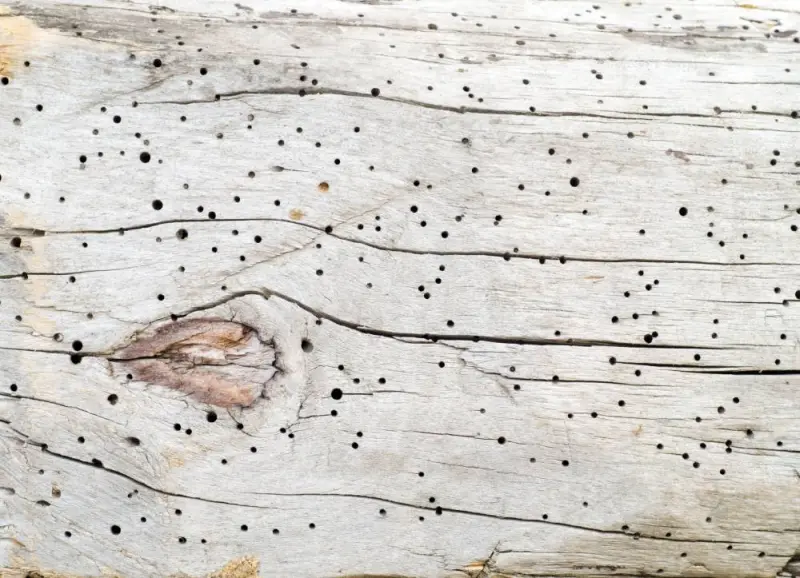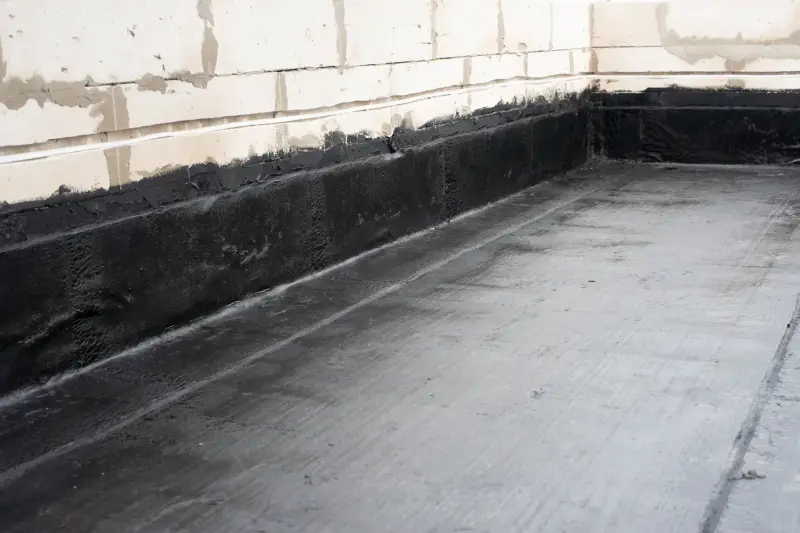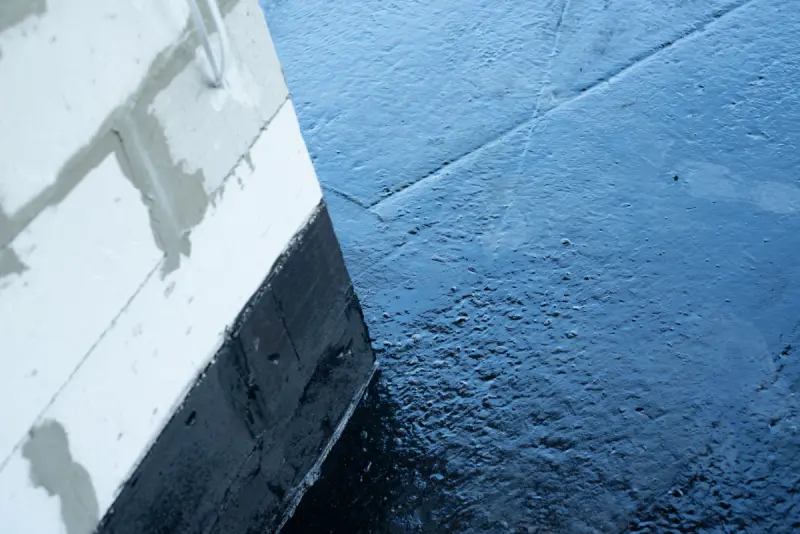Small Round Holes in Wood
Small round holes in wooden structures or furniture are clear signs that you might have a woodworm infestation. These holes are evidence of an ongoing or past problem caused by the larvae of wood-boring beetles. Woodworms lay their eggs in cracks and crevices in wood, and once the larvae hatch, they burrow deep into the timber and feed on it for years.
Woodworm holes are typically round, 1-2mm in diameter and act as exit points for mature beetles emerging from the wood to continue the lifecycle. Finding fine, powdery wood dust (known as frass) around these holes is another strong indication of an active infestation. Frass is commonly found in lofts, floorboards, furniture, and even wooden beams. Woodworms thrive in damp environments, so homes with poor ventilation, high humidity, or leaks are more likely to face infestations. Since the larvae remain hidden while feeding, the exit holes may be the first visible sign of a serious problem.
It’s important to know the difference between old, inactive holes and new, active ones. Fresh holes often have lighter edges and are accompanied by frass, while older holes may be darker and lack debris. For this reason, it's recommended to have a professional assessment done to determine the extent and nature of the infestation.
Crumbling or Damaged Wood
Crumbling or damaged wood are clear signs that you have a woodworm infestation. These wood-boring beetles feed on timber and create tunnel systems that weaken the timber over time, causing it to deteriorate, crumble or split.
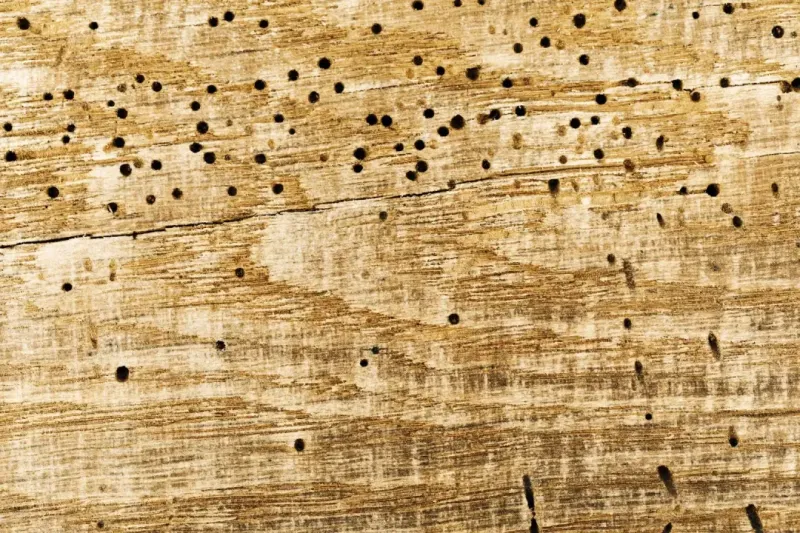
Soft, crumbly edges on wooden beams, floorboards, or furniture, especially in undisturbed areas, are the main signs of a woodworm infestation. You might also notice that certain wooden items appear brittle or unusually light due to the internal tunnelling. In severe cases, pieces of wood can break off or collapse entirely.
High humidity and damp conditions can worsen this issue, as woodworms are drawn to moist wood since it’s easier to bore through. Therefore, areas such as basements, lofts, or poorly ventilated rooms are especially vulnerable to woodworm infestations.
Woodworm damage often features irregular holes, flaky textures, and powdery deposits of frass around wooden structures or furniture. Combined with the visual signs of decay, this evidence can point to an active infestation that requires urgent attention.
Tunnels Inside the Wood
Tunnels inside wood are one of the most definitive signs that your home has a woodworm problem. These tunnels, also known as galleries, are created by the larvae of wood-boring beetles as they feed on the timber. While they're often hidden beneath the surface, these tunnels reveal the extent of the damage and are a clear indicator of an active or past infestation.
Once the beetle lays its eggs on or in the wood, the larvae hatch and begin to bore into the timber, consuming it over many years. During this time, they carve out a complex network of tunnels that compromises the strength and stability of the wood. However, these galleries aren't usually visible from the outside unless the wood is broken, split, or intentionally inspected.
If a piece of wood crumbles or is cut open, you may notice a pattern of narrow, winding holes that run through the grain. This is a clear sign that the woodworm has been active. The tunnels are typically filled with a fine powder known as frass, which is made up of wood particles and excrement, and is often found near the exit holes on the surface.
Tunnels inside wood should never be ignored as they are a strong warning sign of a woodworm infestation that, without intervention, can pose long-term risks to your home's safety and integrity.
Dead Beetles Near Windows or Wood
Discovering dead beetles near windowsills or wooden furniture is a big warning sign that you have a woodworm infestation in your home. Woodworm beetles undergo a life cycle that starts with them laying eggs on or just below wooden surfaces. After hatching, the larvae bore deep into the timber and feed on it for several years before maturing and emerging as adult beetles.
Adult beetles typically emerge from the wood between late spring and early summer in search of mates. During this stage, they are often drawn to light sources, which is why you may find them dead near windows or on window sills. Finding these beetles out in the open suggests that other mature beetles are actively exiting the wood, having completed their larval stage, which is a clear sign of a recent or ongoing infestation.
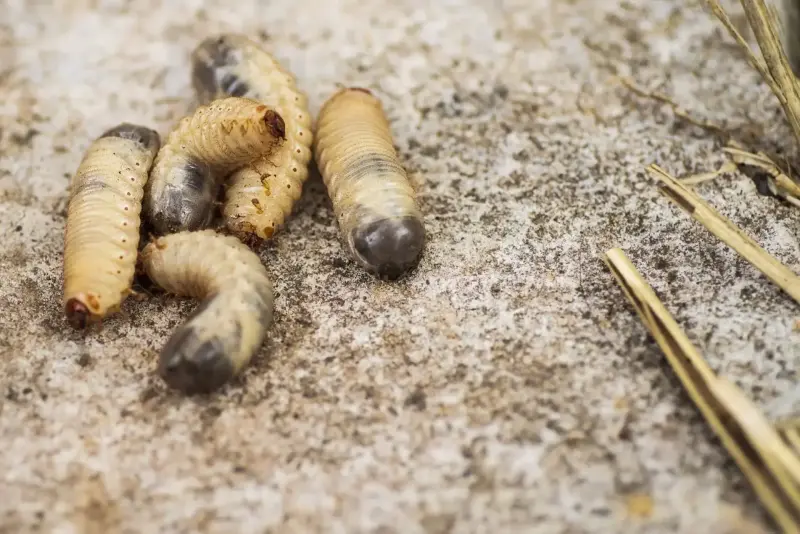
The dead beetles are usually accompanied by other signs, such as small round exit holes, powdery frass, or weakened timber. However, spotting the beetles themselves can help pest controllers tailor their services and implement the most effective treatment method.
Since adult beetles have a short lifespan of just a few weeks, they may go unnoticed unless their bodies are found in visible areas. Regularly inspecting less-used rooms and lofts can help you spot these warning signs early on.
In short, finding dead beetles is a clear sign that wood-boring beetles are infesting your property. Acting quickly can help you prevent further damage and preserve your home’s structural integrity for longer.
Above Water Damp Proofing Ltd provides expert woodworm treatment services across Windsor to help protect your home from structural damage. Our professional team can identify infestations, assess the condition of your timber, and apply effective treatments to eliminate wood-boring beetles. We ensure you have lasting protection against woodworms and peace of mind.

